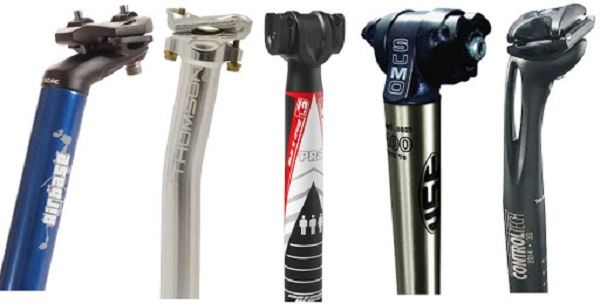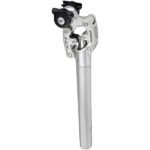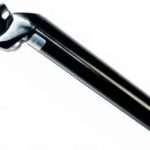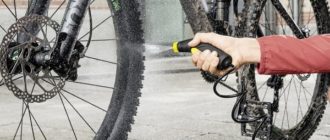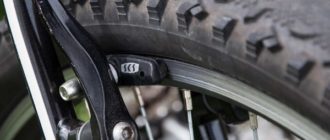When cycling, whether at the professional or amateur level, the first thing to think about is safety. Do not ignore the recommendations of coaches and professional athletes, who say in one voice: the fit of the cyclist must be comfortable and correct. Therefore, the seatpost for the bike, the saddle itself, the design of the handlebars, brakes and other mechanisms should be selected taking into account the specifics of riding.
Today we will talk about the bike seat tube. Its type, type of attachment, and other characteristics affect the safety of the bicycle and the technically correct riding position.
What you need a seatpost for
The purpose is to securely hold and adjust the saddle. Depending on your physiology and riding style, the cyclist can adjust the seat height and other parameters independently.
Most pins are now made of aluminum. Bikes that take part in prestigious competitions are fitted with carbon poles to reduce the weight of the bike. The material is flexible and lightweight, but it is also more expensive.
The most expensive seatposts are made from scandium, which is lighter than carbon tubes, but they cost more than is decent.
Length and size
The standards for seatposts come down to two parameters: length and diameter. The minimum length of the tube is 30 cm. On most modern models there are pins of length 30-40 cm. On some budget models are very short – up to 15 cm. This is uncomfortable because it does not allow you to adjust the height and does not allow the cyclist to take the correct position of the torso.
When choosing a new bike, pay attention to the length and diameter of the seatpost. It is very easy to check the size – just open the eccentric at the base of the tube and pull the tube up slightly. If the product is short, it will quickly slip out. If it is long enough, it will come out slowly and with difficulty.
To determine the length of the seatpost, you must extend it as far as possible (usually the maximum limit is indicated by a white line) and then sit on the bike. If your feet do not touch the ground but reach the pedal at the lowest end position, you are fine. If your feet have trouble reaching the pedals, you need to change the stem or go to a different model of bike to consider.
Interesting! On bikes that are on display to customers, the saddle should be pulled out as far as possible so that you can assess the size of the seatpost at a glance.
Diameter
There are 4 standard values:
- 25 mm diameter;
- 27.2 mm;
- 30.9 mm;
- 31.6 mm.
The first diameter was used on Soviet bicycles. Nowadays, bicycle pins with this diameter are not produced, but frames of this size are still in use.
The diameter of the pins must match the size of the frame. Otherwise, there will be a backlash, and over time, this problem will become even more widespread. Therefore, when buying, be sure to measure with a caliper or an ordinary ruler. In stores you can find adapters that allow you to lengthen the pin a little and install it in a pipe of a different diameter.
Types of seatposts
- Rigid. In essence, it is a clamp that fixes the saddle firmly in the frame. It is the simplest method of fixation. The position can be adjusted by unscrewing the bolt which fixes the seatpost in the frame.
- Dampening. Softens the shock of the ride. This type of prongs has a great variety – each manufacturer develops its own system of shock absorption of the saddle. There is a significant disadvantage – high cost.
- Integrated. Most often such a mechanism is created for a specific bicycle and its owner. They make it under a certain growth and landing, so it is impossible to adjust its position. Most often installed on steel or carbon frames.
- Pneumatic. Perhaps this is the most modern mechanism, which is based on a telescopic system. The mechanism allows you to change the position of the saddle on the move, without making any effort to do so. There are mechanical and hydraulic devices.
At times, batting seatpipes are used to reduce the weight of the bike. These are pins with different wall thicknesses across the entire tube surface. They are more expensive than their standard counterparts, but much lighter. If weight is important to you, it makes sense to look for such models.
Types of saddle fixation
The main purpose of the seatpost is to securely fix the saddle. Accordingly, the locking system that secures the entire structure must meet this requirement as closely as possible. Three locking systems have been developed over the course of the development of the bicycle industry:
- The tapered end is inserted into the sleeve of the seat and secured with a bolt. Such mechanisms are used to complete conventional city models.
- A more complicated mechanism consisting of two frames, between which a saddle fixing element is installed. The whole structure is tightened securely with a bolt. It is possible to adjust the angle of inclination.
- Another mechanism is based on two bolts screwed directly into the saddle itself with a special insert. This allows not only the angle of inclination to be adjusted but also ensures a firm grip.
In some cases, the saddle lock may be designed for a specific bike model. Typically, these are bikes that take part in prestigious competitions. Manufacturers of such locks patent their products, the designs of which are characterized by a complex device.
Seatpost care
Like all other bicycle mechanisms and components, the seat tube periodically requires attention and proper care. This helps extend its life. In essence, it comes down to a few points:
- Lubrication in good time – once a year is sufficient.
- Telescopic droppers require periodic changing of oil in the chamber, pumping of air and replacement of expendable elements (oil scoops and dusters).
- Hydraulic mechanisms require seasonal maintenance.
Keep in mind that improperly adjusting the seat tube increases the load on the frame, which leads to premature signs of metal “fatigue.”
Conclusion
It is not enough to know where the seat tube of your bicycle is located – you need to be able to correctly match it to the size and type of fixation, and to adjust the position of the seat to use the bicycle safely and not to overload your back.


